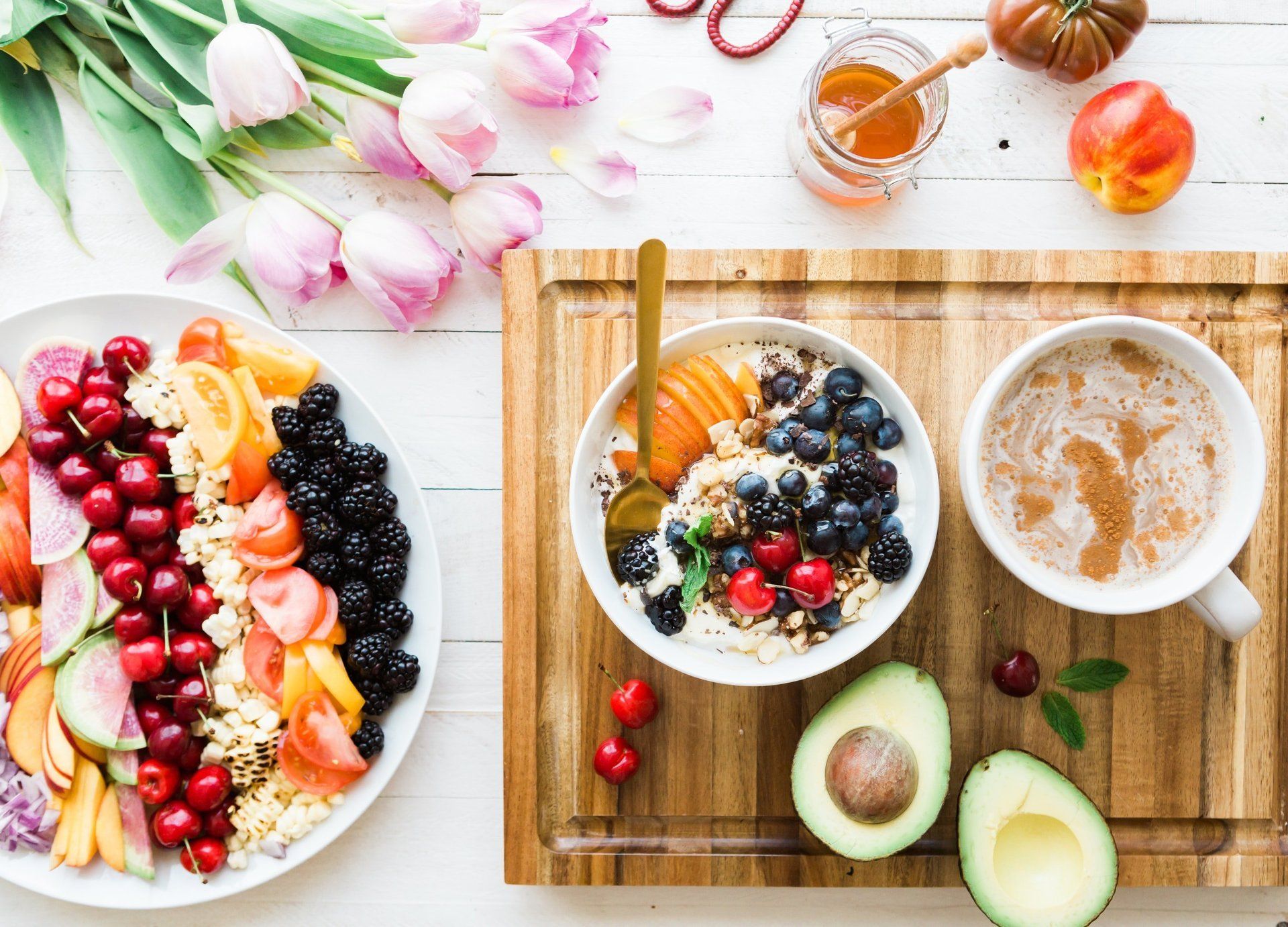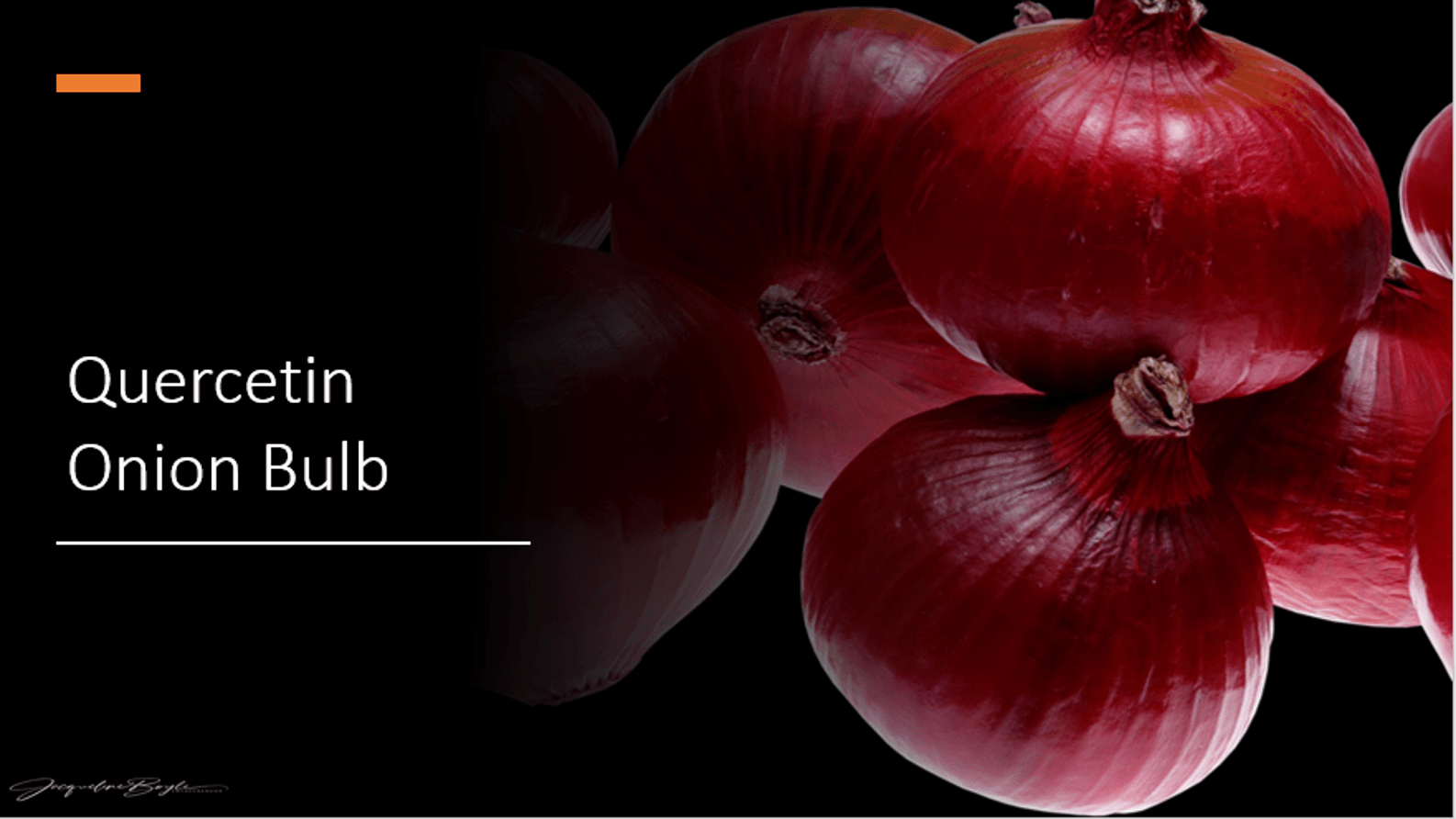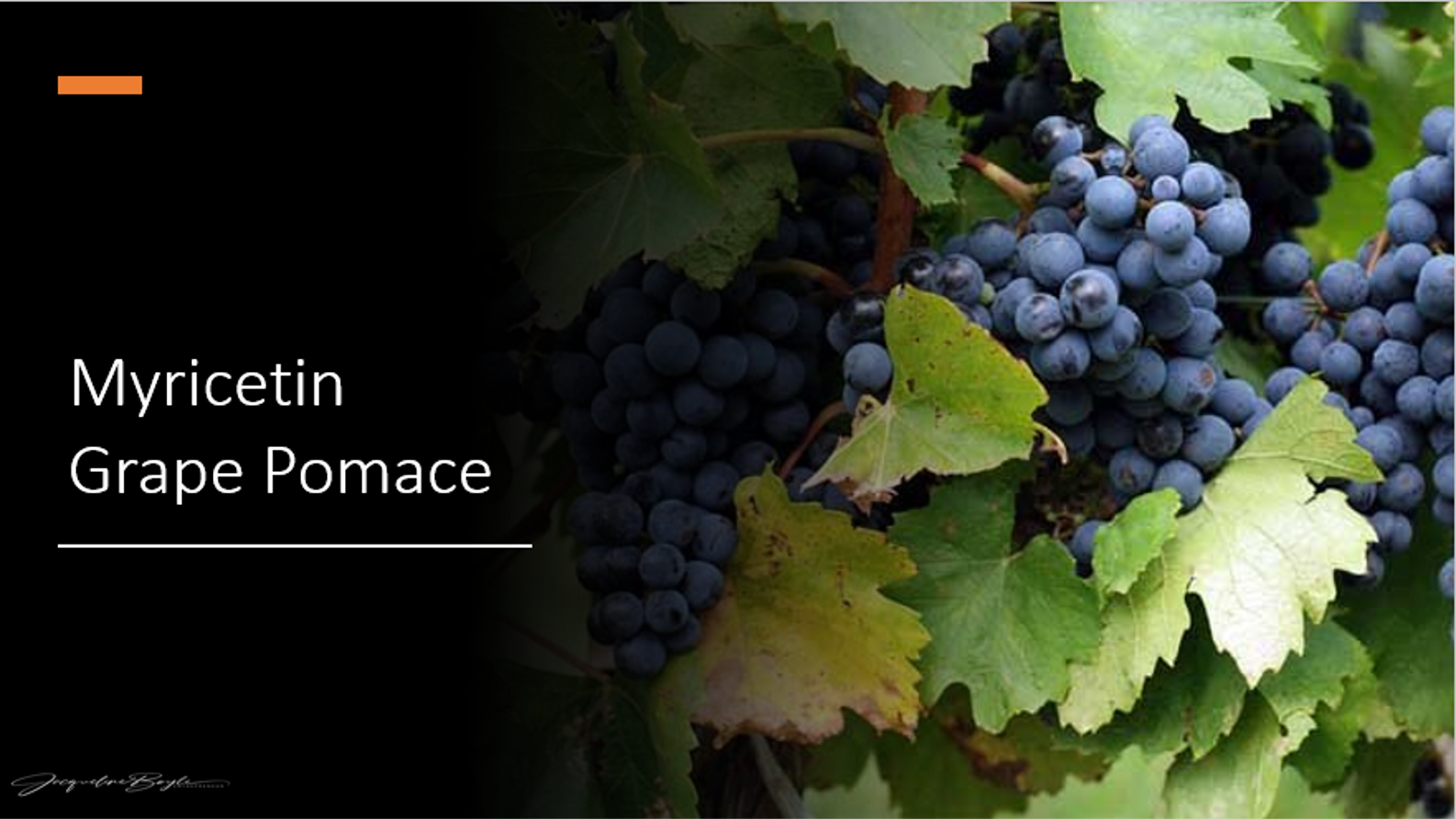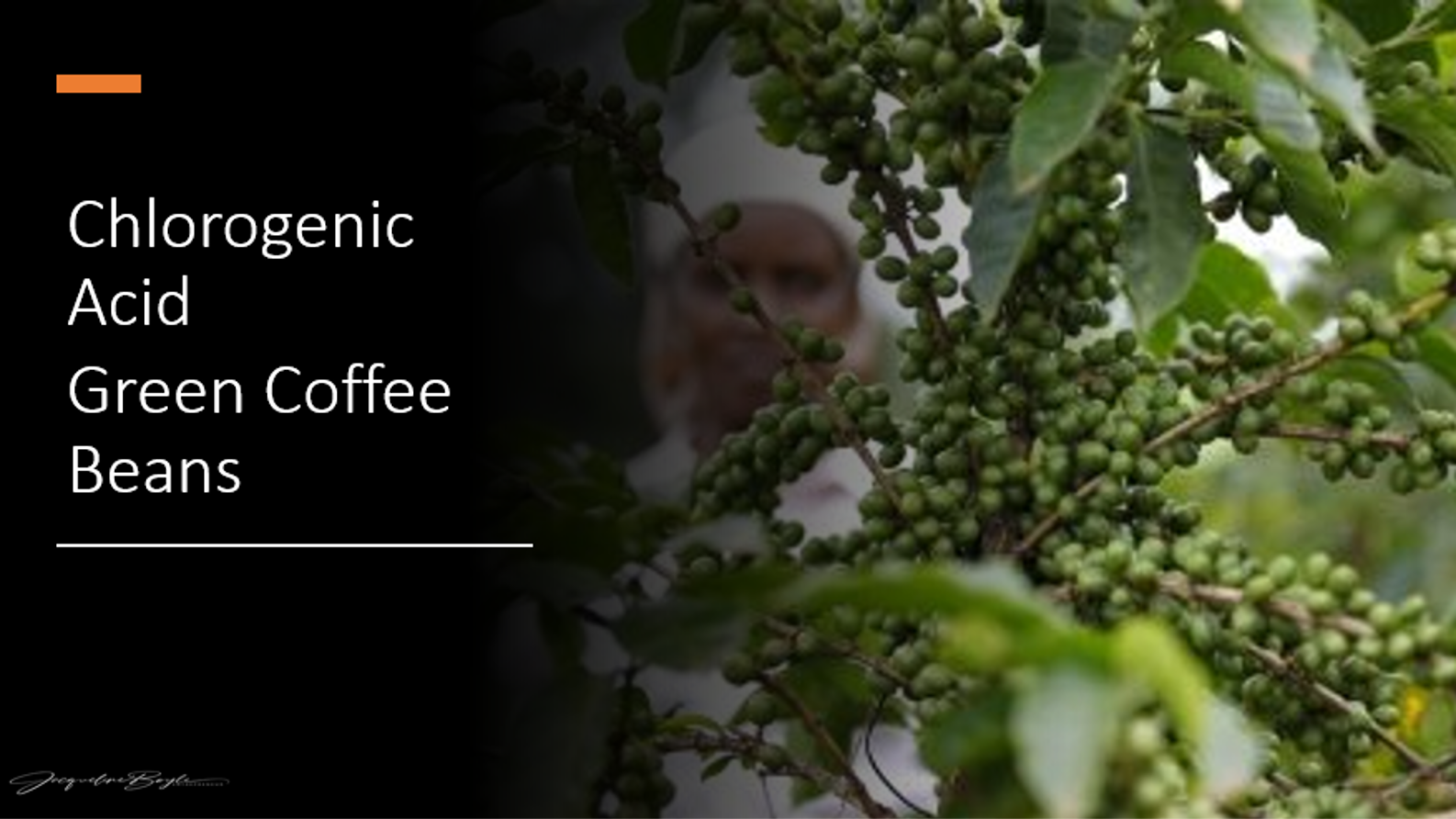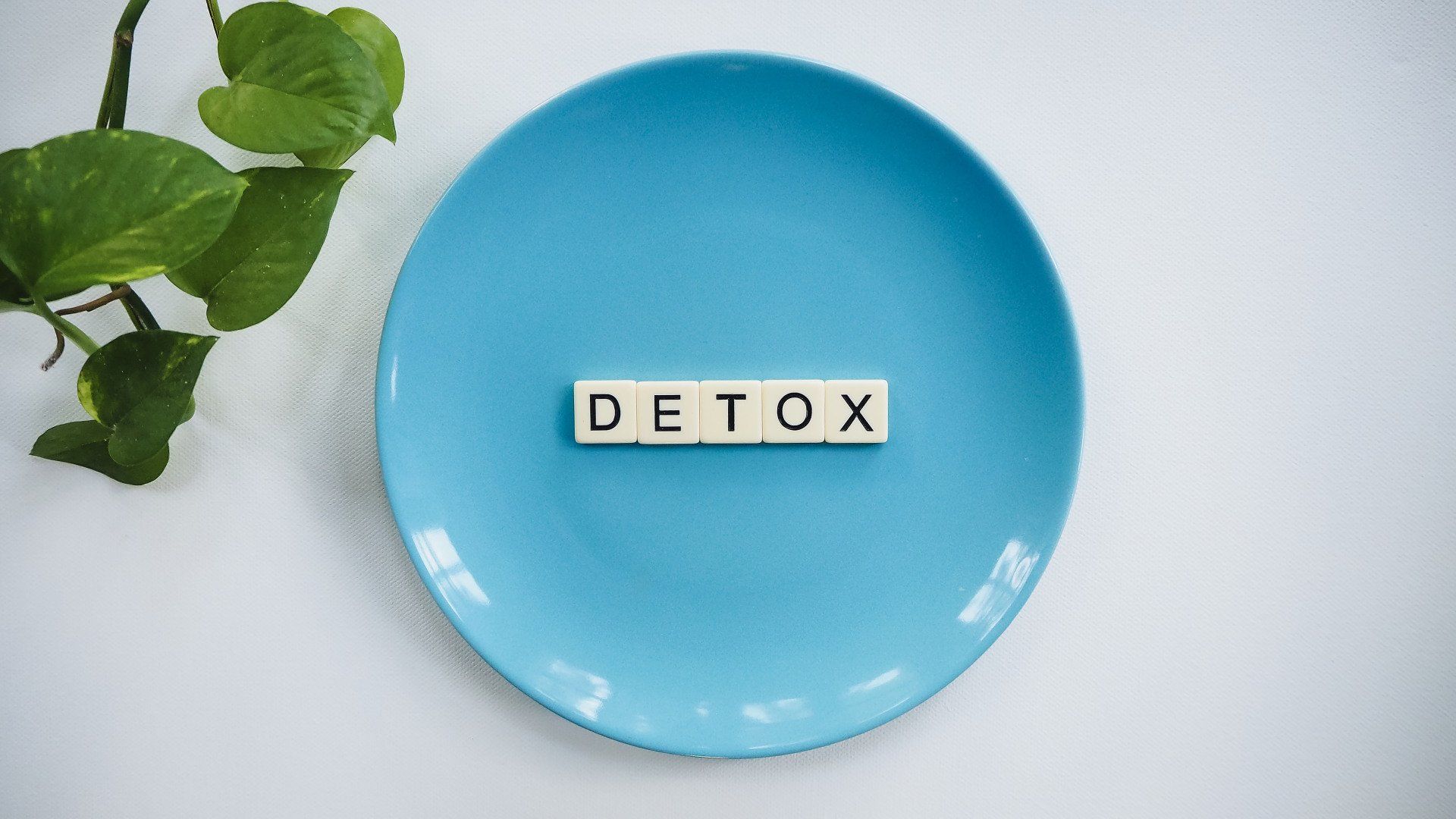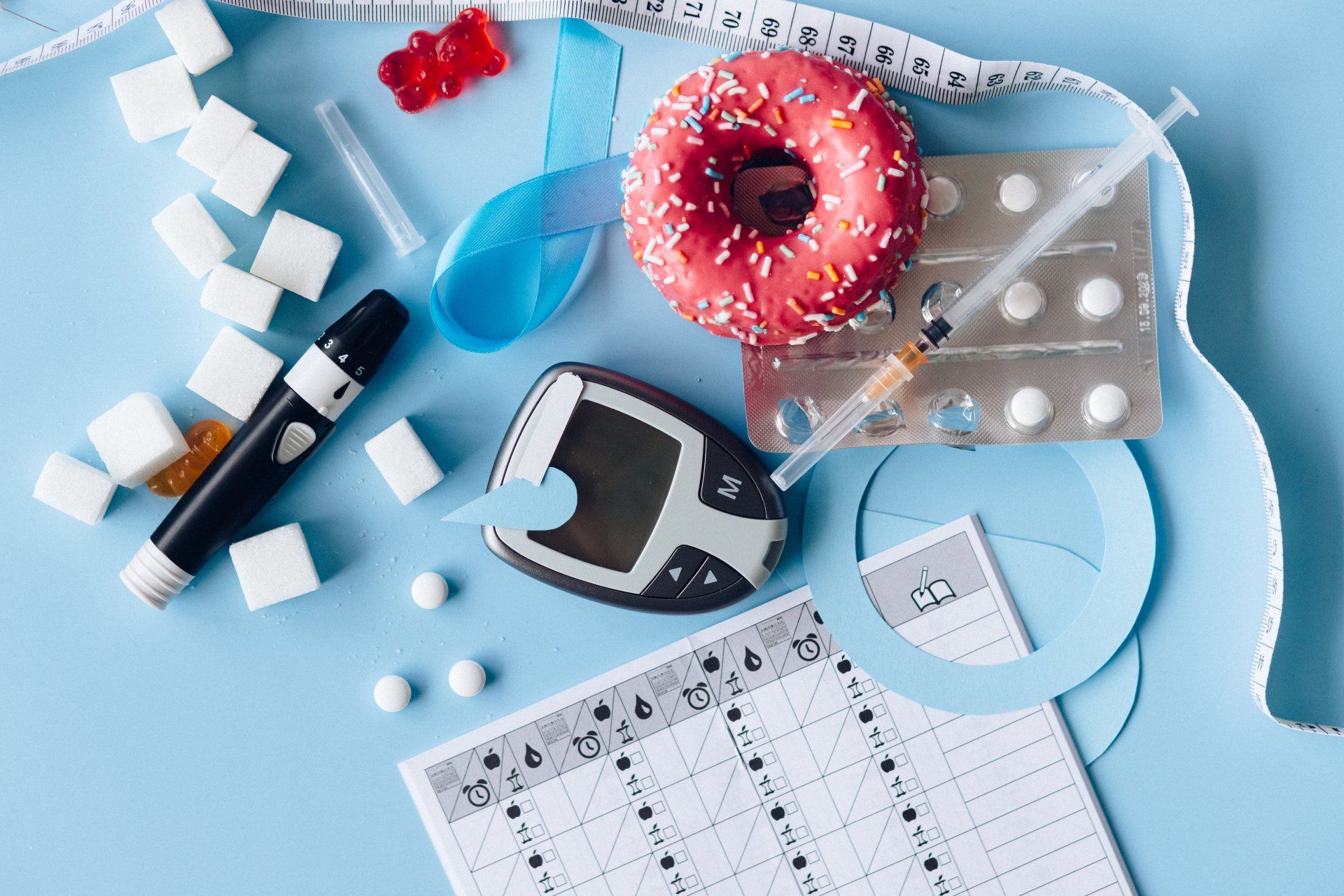Flavonoids are one of the largest nutrient families known to scientists and include over 6,000 already-identified family members. Some of the best-known flavonoids include quercetin, kaempferol, catechins, and anthocyanidins.
This nutrient group is most famous for its antioxidant and anti-inflammatory health benefits, as well as its contribution of vibrant color to the foods we eat. As an especially delicate group of nutrients with respect to cooking heats, flavonoids are often front and center in development of our cooking methods at WHFoods, where we always look for cooking methods best able to preserve nutrients.
Basic Description
The unique nutrient richness of every whole, natural food can be showcased in a variety of ways. But there is no better way to highlight the unique nutrient richness of foods than to focus on their flavonoid content! Flavonoids are a quite remarkable group of phytonutrients that fall into the chemical category of polyphenols. They are perhaps most famous for their rich diversity of color-providing pigments (including the deep blues of blueberries and rich reds of raspberries). The name of these phytonutrients actually derives from their color-related chemistry, with the Latin word flavus meaning "yellow." As a group, however, flavonoids are highly bioactive and play a wide variety of different roles in the health of plants, animals, and human health.
The flavonoid nutrient family is one of the largest nutrient families known to scientists. Over 6,000 unique flavonoids have been identified in research studies, and many of these flavonoids are found in plants that are routinely enjoyed in delicious cuisines throughout the world. In terms of nutrient richness, we get far more flavonoids from plant foods than from animal foods, and in particular, vegetables and fruits can be especially nutrient-rich in this type of phytonutrient.
Some of the most widely-studied flavonoids are nutrients you may already have heard about not in particular connection with any specific food—for example, the flavonoid quercetin. Other flavonoids you may have heard about due to their association with a particular food—for example, the catechins in green tea. Sometimes a flavonoid is actually easy to link up with its most nutrient-rich food sources— for example, the tangerine found in tangerines (as well as other citrus fruits).
Flavonoids are best known for their antioxidant and anti-inflammatory health benefits as well as the support of the cardiovascular and nervous systems. Because they also help support detoxification of potentially tissue-damaging molecules, their intake has often, although not always, been associated with decreased risk of certain types of cancers, including lung and breast cancer.
Antioxidant Benefits
Because many flavonoids—and especially those belonging to two flavonoid subgroups called flavanols and flavan-3-ols—can be effective in reducing free radical damage to cells and other components in body tissue, they provide antioxidant benefits. It is not clear, however, if we should be thinking about flavonoids as falling into the same category as more widely known antioxidant nutrients like vitamin C or vitamin E.
One reason for this is because their concentration in the bloodstream is so much lower. Another reason lies in the fact that many of the antioxidant functions of the flavonoids are not performed by the flavonoids themselves, but by forms of the flavonoids that have been altered by our metabolism. Even though we do not know all the details about the way flavonoids function as antioxidants, however, studies have documented better protection of certain cell types—for example, red blood cells—following consumption of flavonoid-rich foods. Blueberries, for example, have been repeatedly studied in this context for their flavonoid-related antioxidant benefits.
In this antioxidant context, it is also worth pointing out the potentially unique relationship between flavonoids and vitamin C. Recent studies have shown the ability of flavonoids to alter transport of vitamin C, as well as to alter function of an enzyme called ascorbate oxidase, which converts vitamin C into a non-vitamin form (monodehydroascorbate). While we do not yet know the full meaning of these relationships, it is clear that the transport and cycling of vitamin C is flavonoid related. This association makes sense to us, since so many foods high in vitamin C (such as our top five WHFoods for vitamin C are papaya, bell peppers, broccoli, Brussels sprouts, and strawberries) are also high in flavonoids.
Anti-Inflammatory Benefits
Much of the research on flavonoids as anti-inflammatories has involved their ability to block the production of messaging molecules that promote inflammation. In metabolic terms, this activity of flavonoids involves the inhibition of cyclo-oxygenase (COX) and lipoxygenase (LOX) enzymes. Not only have specific flavonoids (for example, quercetin) been shown to provide these benefits but so also have flavonoid-containing extracts from a variety of foods, spices, and herbs. In addition to the metabolic activities described above, food flavonoids have also been shown to suppress inflammatory signaling in another metabolic pathway called the nuclear factor kappa-B (NF-kB) pathway.
Longevity
A large-scale, 25-year study, published in 1995 in the journal Archives of Internal Medicine, looked at men across seven countries and found that flavonoid consumption was significantly associated with longevity. The researchers suggested flavonoid consumption could account for 25 percent of the observed difference in mortality rates from coronary heart disease and cancer.
Weight management
It was noted that flavonoids are also associated with inflammation and weight loss. “Flavonoid content can relieve inflammation and decrease the levels of an appetite-suppressing hormone, leptin,” he said. “We know for sure that leptin plays an important role in food consumption because mice with mutations in leptin or its receptor become obese, and these animals are used as models for studying diabetes and obesity.”
Cardiovascular disease
Because of their antioxidant and anti-inflammatory behaviours, flavonoids are associated with cardiovascular disease prevention. According to the George Mateljan Foundation’s World’s Healthiest Foods website, flavonoids may lower the risk of atherosclerosis through protecting LDL cholesterol from free radical damage. They may also improve the quality of blood vessel walls.
Several studies have found an association between higher flavonoid intake levels and lowered cardiovascular disease risk across various groups, including postmenopausal women, male smokers and middle-age men and women. For example, a study of more than 10,000 men and women published in 2002 in the American Journal of Clinical Nutrition found that those with higher levels of quercetin had lower rates of ischemic heart disease and those with higher levels of kaempferol, naringenin and hesperetin had lower cerebrovascular disease rates.
Various flavonoids, including quercetin, have shown to be effective at preventing platelet aggregation, according to the Linus Pauling Institute. Platelet aggregation is a known component in heart disease because it contributes to forming blood clots that can lead to strokes and other problems.
Cancer prevention
The research in this area has produced mixed results. Animal studies have shown positive results when it comes to lung, mouth, stomach, colon, skin and other cancers, according to the Linus Pauling Institute, but human studies have yet to show consistently similar results. More research is needed.
The most promising studies to date regard breast and stomach cancer. A large study published in 2003 in the British Journal of Cancer found that women with higher levels of flavone intake were at a lower risk for developing breast cancer, while a study in Cancer Causes & Control found a correlation between kaempferol intakes and reduced gastric cancer risk. On the other hand, another study, published in the same journal, did not associate reduced gastric cancer risk with kaempferol but flavanones.
Though flavonoids exhibit powerful antioxidant activity, they exist in a relatively low concentration in the bloodstream when compared to antioxidants like vitamin C and vitamin E, according to World’s Healthiest Foods. This may lower their overall antioxidant power, and thus lessen their cancer-fighting effects.
Support of the Nervous System
Protection of nerve cells from oxygen-based damage and help during the slow and demanding process of nerve regeneration (outside of the brain and spinal cord), are both demonstrated benefits of flavonoid intake for the nervous system. There is some preliminary evidence that the onset of certain chronic neurodegenerative diseases—including age-related dementia and Alzheimer's disease—may be delayed when long-term intake of flavonoids has been strong.
Because flavonoids may help to improve blood flow in the brain, there is also preliminary evidence to suggest the possibility of better brain functioning in some areas, including areas involving cognitive function.
Neurodegenerative disease prevention
Flavonoids’ anti-inflammatory and antioxidant effects may help protect against neurodegenerative diseases like Alzheimer’s and Parkinson’s. In animal studies, flavonoid levels have been positively correlated with reduced risk of these diseases, but human studies have yielded inconclusive results. For example, a large-scale study published in 2000 in the European Journal of Epidemiology found that among elderly men and women, those with the highest levels of flavonoids had a 50 percent lower risk of developing dementia over the next five years than those with the lowest levels of flavonoid intake. On the other hand, a study published in 2002 in JAMA found that among men, the only group that saw a reduced risk of Alzheimer’s when increasing their flavonoid intake was smokers. The same results were seen in terms of Parkinson’s disease, according to a study published in 1997 in Archives of Neurology.
Flavonoids may also increase blood flow to the brain, improving cognitive function, according to World’s Healthiest Foods. A study published in 2007 in the American Journal of Epidemiology found that elderly men and women with higher flavonoid intake had better cognitive performance at the start of the study and significantly less age-related cognitive decline over the next 10 years than those with lower flavonoid intake.
Diabetes
A study published in 2013 in the journal Diabetic Medicine found that among men with type 2 diabetes, adding a flavonoid-rich spice mix to hamburger meat significantly improved their vascular function during subsequent hours. The spice mix included rosemary, garlic, ginger, black pepper and oregano — all spices that contain flavonoids. World’s Healthiest Foods notes that similar effects have been seen in studies of grape juice, chocolate, pomegranate juice and soy foods.
Other Health Benefits
In terms of their anti-cancer potential, research on flavonoids has been somewhat mixed. Due to their well-documented antioxidant and anti-inflammatory properties, flavonoids would be expected to lower risk of certain cancers since chronic oxidative stress and chronic unwanted inflammation can place cells at greater risk of becoming cancerous. Furthermore, because flavonoids are known to modify the body's detoxification pathways, it might be expected that flavonoids would help lower exposure to unwanted toxins that could pose increased cancer risk. In studies on animals and on isolated cell types, the above expectations seem to be fully met, with flavonoid intake improving detoxification, oxidative stress, unwanted inflammation, and initiation of cells into pre-cancerous states. However, in larger scale studies on humans and risk of human cancers, greater intake of flavonoids has not been consistently associated with decreased risk of cancer. To date, the strongest evidence appears to involve breast cancer and lung cancer where decreased risk is a more consistent finding.
We suspect that part of the mixed findings in this flavonoids-and-cancer area might involve the complex nature of flavonoids as a group. For example, it may be the case that certain subgroups of flavonoids are particularly helpful for lowering risk of certain types of cancer. It might also be the case that studies have had trouble accurately quantifying flavonoid intake. There are thousands and thousands of food flavonoids, and yet some studies have only focused on very select examples or limited types of foods.
Improved detoxification is a highly likely benefit that we get from strong flavonoid intake; yet like with the area of cancer risk, research here has been somewhat mixed. When the cells in our body detoxify unwanted contaminants, there are two key steps involved in the process. In a first step (called Phase 1), potentially damaging molecules are made more reactive so that they can be passed on to Phase 2. In this second, Phase 2 step, the activated molecules get neutralized by being combined with a second neutralizing molecule. Flavonoids can impact both steps in detoxification (Phase 1 and Phase 2). With Phase 2, these influences seem fairly consistent because they tend to promote the combining/neutralizing goal of Phase 2. However, with respect to Phase 1, the role of flavonoids is more complicated since they can switch Phase 1 either on or off. In other words, they can both facilitate and block this first step in detoxification. This complicated relationship between flavonoids and detoxification has resulted in some mixed research findings, although overall, most researchers have concluded that strong flavonoid intake modified detoxification in a helpful way and decreases our risk of problems from unwanted toxins.
A final potential health benefit we want to mention is better regulation of cell cycles. Most cells in our body go through stages of activity where they rest, divide, or go into a self-dismantling and self-recycling process called apoptosis. In the health of all our body systems, it is important for these cell cycle stages to stay in balance. Ample intake of food flavonoids appears to promote these cell cycle balances, most likely through regulation of signaling that takes place between cells and their surroundings.
Summary of Food Sources
Flavonoids are produced by plants, and plant foods are by far our greatest source of these health-supporting phytonutrients. Among all plant food groups, by far it's been fruits and vegetables that have been best studied and most analyzed for their flavonoid content. There is also flavonoid data on nuts and seeds, grains, beans and legumes, and select other foods and beverages (for example, green and black tea).
It is important to remember that flavonoids are an exceptionally large (more than 6,000 have been so far identified) and remarkably diverse group of phytonutrients. The U.S. Department of Agriculture's (USDA) Flavonoid Database actually breaks down its flavonoid analyses into five of the basic flavonoid chemical subgroups, and it analyzes the best food choices in each of these subgroups. We like this approach to understanding the flavonoid content of food, because it emphasizes the need to consume a wide variety of flavonoids that includes all of the different types. In keeping with this approach, the charts below will show you our top WHFoods in each of the flavonoid subcategories. The five subcategories shown in the charts below are: (1) flavanols (which include quercetin, kaempferol, myricetin, and isorhamnetin); (2) flavan-3-ols (which include catechins, epicatechins, gallocatechins, and theaflavins); (3) flavones (which include apigenin and luteolin); (4) flavanones (which include hesperetin, naringenin, and eriodictyol); and (5) anthocyanidins (which include cyanidin, delphinidin, malvidin, pelargonidin, peonidin, and petunidin).
WHFoods Best Sources of Flavonoids (Scroll down the list in the table below).
*It's important
to note that in the U.S. the largest single source of flavonoids is black and green tea, and that over half of all flavonoid intake comes from the flavan-3-ol subgroup that is so concentrated in tea; this subgroup includes catechins, epicatechins, gallocatechins, and theaflavins.
As you can see, it takes a variety of foods from a variety of different food groups to give you a good cross-section of flavonoid subcategories. The USDA estimates that in the U.S., daily total flavonoid consumption by the average adult is approximately 250-275 milligrams, with about half of total consumption coming in the form of flavan-3-ols from black and green tea.
The colorful reds, blues, and purples in berries are provided by their anthocyanidins, and that is why you find so many of these fruits listed in the anthocyanidin column.
As a group of phytonutrients, flavonoids emphasize—in a way that is not as well emphasized by perhaps any other nutrient—how valuable fruits and vegetables are to our nourishment and everyday health.
Impact of Cooking, Storage and Processing
You will lose some flavonoids from plant foods during prolonged storage. For example, onions stored at room temperature will lose about one quarter to one third of their original flavonoid content over six months, with most of the loss occurring in the first two weeks.
As water-soluble nutrients, flavonoids can be lost through water contact, and in some cases, up to 80% of specific flavonoids can be lost into cooking water during the boiling of foods. Because many flavonoids provide visible colors in a food, loss of flavonoids during boiling can often be seen in a dulling of the food's colors. Color changes of this kind are one of the indicators we use for overcooking; if you boil or steam a food long enough to see its vibrant colors start to dull or disappear, you can be sure that you are losing too many valuable nutrients from the food, including its health-supportive flavonoids.
Flavonoids are susceptible to damage by heat, and as mentioned earlier, they are also susceptible to damage over prolonged periods of time. This issue of time brings us to the benefits of fresh fruits and vegetables, which are likely to be more flavonoid-rich the fresher they are at the time of purchase. The issue of heat is one of the reasons we caution against frying or lengthy cooking even in medium heats. (Our Healthy Sauté method, for example, typically calls for cooking times of 5-8 minutes or less.)
Finally, we would note that flavonoids are often concentrated in the skins and outer portions of fruits and vegetables, and that these portions of the foods are excellent to consume. Due to risk of contamination on these outermost surfaces, you always want to wash the foods and gently scrub them with a vegetable brush. Of course, you can also reduce risk of contamination by purchasing certified organic foods. When you are storing flavonoid-rich foods, it is best not to damage their skins prior to storage, for example, by pre-cutting, pre-slicing, or pre-peeling and then placing in the refrigerator. They are best kept in whole, natural form until you are ready to consume them or prepare them for inclusion in a recipe.
Risk of Dietary Deficiency
As mentioned earlier, average consumption of flavonoids in the U.S. is far less than 1 gram per day (at about 250-275 milligrams), with black and green tea serving as the number one source of these phytonutrients. While we would classify this level of intake to be inadequate from a health standpoint, we do not have a good standard to use in determining optimal flavonoid amounts.
There is no Dietary Reference Intake (DRI) for flavonoids and no Daily Value (DV); in addition, nutrient databases do no provide anywhere close to comprehensive information about the overall flavonoid content of foods. All of these limitations make statements about dietary deficiency somewhat tentative. However, from a common-sense standpoint, let us say that a person consumed six vegetable and four fruit servings in a day, for a total of 10 vegetable-plus-fruit servings. Furthermore, let us say that all of these servings came from whole, natural foods. In this situation, a person's total flavonoid intake would be likely to fall somewhere near 1 gram (1,000 milligrams) or more. It is within this context that we consider average flavonoid intake in the U.S. to be inadequate.
In addition, since a disproportional amount of U.S. flavonoids come from a single flavonoid subgroup (flavan-3-ols provided from black and green tea), there is likely to be flavonoid deficiency from the other subgroups given the pattern of flavonoid consumption in the U.S.
Risk of dietary deficiency for flavonoids is basically synonymous with low dietary intake of whole, natural foods, and in particular, low intake of vegetables and fruits. By far your best way to ensure ample flavonoid intake is to maximize your intake of whole natural foods, including fresh, brightly coloured vegetables and fruits whose flavonoid pigments provide them with their vibrant colors. This approach sounds simple, and it is a great method for increasing your flavonoid intake.
Other Circumstances that Might Contribute to Deficiency
Most documented risks for flavonoid deficiency have already been discussed since they involve poor dietary intake. Overconsumption of processed foods, overcooking of foods, and under consumption of fresh vegetables and fruits are the primary circumstances related to deficiency. Problems with the chewing of fresh foods can increase a person's flavonoid deficiency risk, especially if these foods are avoided in a meal plan due to chewing problems. Lack of appetite can also put a person at risk of deficiency, simply due to overall low intake. In studies of the overall U.S. population, inadequate intake of nutrients—including flavonoids—can be associated with poverty and general lack of access to fresh foods.
Relationship with Other Nutrients
As described earlier, a unique relationship exists between flavonoids and vitamin C. Flavonoids affect the transport of vitamin C around the body, and they also help regulate the function of an enzyme called ascorbate oxidase, which converts vitamin C into a non-vitamin form (monodehydroascorbate). While we do not yet know the full meaning of these relationships, it is clear that these nutrients have a special and unique relationship. The uniqueness of their relationship makes sense to us since so many foods are high in both flavonoids and vitamin C. Our top five WHFoods for vitamin C—namely papaya, bell peppers, broccoli, Brussels sprouts, and strawberries—are great examples since each of these foods is rich in flavonoids as well.
Risk of Dietary Toxicity
We are not aware of any evidence that dietary flavonoids can be directly toxic, even in meal plans that contain an abundance of fresh vegetables and fruits as well as an abundance of nuts, seeds, beans, legumes, and whole grains. When consumption of the foods above is extremely high, the total fibre content of the diet usually goes up dramatically. (In comparison to average fibre intake in the U.S., which averages about 16 grams per day, fibre intake in countries with high consumption of the foods above often exceeds 100 grams. (Even our Healthiest Way of Eating Plan averages over 50 grams of daily fibre.) So, we would expect high flavonoid intake from whole natural foods to accompany diets high in dietary fibre, and we just do not see toxicity risks being associated with this type of dietary intake.
In addition, since flavonoids are water-soluble, we would expect them to follow a pattern associated with other water-soluble nutrients. That pattern involves lower risk of toxicity than is associated with fat-soluble nutrients, and in many cases, a decision by the National Academy of Sciences (NAS) not to establish a Tolerable Upper Intake Level (UL) for water-soluble vitamins like vitamin B1 or vitamin B2 when obtained from food. We suspect that a similar decision might end up holding true for flavonoids as well, although it's important to remember that the NAS has yet to even establish flavonoids as a required human nutrient or to set Dietary Reference Intake (DRI) amounts for flavonoids as a group or for any specific flavonoid.
Disease Checklist
· Easy bruising
· Skin damage from sun
· Hay fever
· Prostatitis
· Osteoarthritis
· Rheumatoid arthritis
· Hot flashes
· Venous insufficiency
· Cardiovascular disease (prevention)
· Low immune function
· COPD (Chronic Obstructive Pulmonary Disease)
The flavonoid family
Flavonoids are part of the polyphenol class of phytonutrients. Polyphenols have historically been used in Chinese and Ayurvedic medicine, and they are associated with skin protection, brain function, blood sugar and blood pressure regulation, in addition to antioxidant and anti-inflammatory activity.
There are several significant groups of flavonoids, including anthocyanidins, flavanols, flavones, flavanols, flavanones and isoflavones. Within the flavanol subgroup there are still more subgroups. Each of these subgroups and each type of flavonoid carries its own distinct set of actions, benefits and originating foods.
An overview of some flavonoid groups, where they can be found, and their benefits:
Flavones:
These include luteolin and apigenin. Good sources of flavones are celery, parsley, various herbs and hot peppers. Flavones are associated with overall antioxidant benefits and delaying the metabolizing of drugs.
Anthocyanidins:
These include malvidin, pelargonidin, peonidin and cyanidin. Good sources of anthocyanidins include red, purple and blue berries; pomegranates; plums; red wine; and red and purple grapes. Anthocyanidins are associated with heart health, antioxidant effects and helping with obesity and diabetes prevention.
Flavanones:
These include hesperetin, eriodyctiol and naringenin. Flavonoids are found abundantly in citrus fruits. They are associated with cardiovascular health, relaxation and overall antioxidant and anti-inflammatory activity.
Isoflavones:
This subgroup includes genistein, glycitein and daidzein. Isoflavones are highly concentrated in soybeans and soy products, as well as legumes. They are phytoestrogens, meaning that they are chemicals that act like the hormone estrogen. Scientists suspect they may be beneficial in lowering the risk of hormonal cancers, such as breast, endometrial and prostate cancers, though study results are currently mixed. In various studies, isoflavones have sometimes acted as antioxidants and sometimes as oxidants, so their effect on cancer is unclear. They are also being studied as a way to treat menopausal symptoms.
Flavanols:
This widely distributed subgroup of flavonoids includes quercetin and kaempferol. They are found in onions, leeks, Brussels sprouts, kale, broccoli, tea, berries, beans and apples. Quercetin is an antihistamine associated with helping to relieve hay fever and hives. It is also known for its anti-inflammatory benefits. Kaempferol and other flavanols are associated with powerful anti-inflammatory and antioxidant activities leading to chronic disease prevention.
Consuming flavonoids
Many types of flavonoids are available in supplement form. While these may be a good option for those struggling to get sufficient fruits and vegetables in their diet, the Linus Pauling Institute notes that quercetin supplements and tea extracts may cause side effects such as nausea, vomiting, tremors and dizziness. There are no side effects of consuming flavonoids through plant-based foods.
People who hope to consume flavonoids through plant-based foods should be aware that cooking and storing could change the flavonoid make up in fruits and vegetables. For example, onions stored at room temperature can lose up to one-third of their flavonoids in just two weeks. According to World’s Healthiest Foods, up to 80 percent of some flavonoids can be lost in the cooking process. A good way to tell if your food is losing nutrients is by its color; if its normally vivid colors start to fade while being boiled or cooked, your food is losing its phytonutrients.
It is noted that flavonoids are often concentrated in the skins and outer areas of fruits and vegetables. For that reason, it is better not to cut up fruit, which damages the skin, until you are ready to eat it.
Basically, we do not get enough Flavanols in general from our food, specifically we do not get enough Myricetin.
Thank you for your support in reading this article and hopefully, you may have found it beneficial.
"Providing Better Health Through Knowledge"

